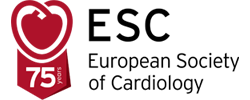In this cohort study by Prakash KC et al [1], that included 88 904 Swedish men and women in paid work, free of cardiometabolic disease at baseline, the authors examined the impact of sexual harassment at work on the risk of cardiovascular and cardiometabolic disease, during a 12-months follow-up. The authors found that overall, 4.8% (4300/88 904) of the included study population reported workplace sexual harassment during the previous 12 months. There was a significant difference among sexes as prevalence was 1.9% in men and 7.5% in women. Also, foreign background, the type of job (high demand and low control), family situation (separated/single) and younger age, were predominant factors. Sexual harassment is usually regarded as unwanted or unwelcome verbal or non-verbal behavior of sexual nature. This intimidating and humiliating experience with somewhat hostility, as shown from previous studies, it can aggregate adaptation from the victim of unhealthy lifestyle habits, like smoking, alcohol consumption, unhealthy diet and lack of exercise, leading also to stress disorders [2]. All these may accelerate atherosclerotic disease progression in subjects having already an atherosclerotic burden. In this prospective study, the experience of workplace sexual harassment was associated with an increased risk of both cardiovascular disease and diabetes. However, in the final model fully adjusted for sex, family situation, age, place of birth, education, income, job demands, job control, job support and physical strain at work, the risk for cardiovascular disease was borderline statistically significant, while the risk for myocardial infarction and stroke was insignificant. This implicates that other factors like work-stress in high demand works in relation with low income and education status may also play an important role on cardiovascular risk beyond sexual harassment [3]. Additional low support in high demand jobs also exaggerates cardiovascular risk [4]. In a recent study on female nurses, sexual assault and harassment was related with an increased risk of arterial hypertension after adjustment made for body mass index, alcohol use, smoking status, physical activity and diet [5]. Again, work stress can affect directly or indirectly health status. Adult life-style behaviors and body mass index may lie between sexual assault and arterial hypertension, as victims of those situations tend to gain weight and smoke [2]
Inappropriate behavior especially from superiors or fellow workers is totally discouraged and should be banned, but caution should also be taken as the Me-Too movement has received widespread attention and sometime may be used for over-reporting for personal interests. One of the main limitations in those studies is the single-item self-reported measurement, which is not very sensitive in terms of capturing different types of sexually harassing behaviors and furthermore, most of the cases reported have not been judged by authorities or reported to Human Resources departments.
In line with the creation of a supportive neighborhood [6], building also healthy work-place environment must be one of the key-priorities for cardiovascular disease prevention [6], especially for foreign workers with low education and income status, who are vulnerable in remaining in high-demand jobs.
The myth of Medusa, the beautiful maiden that became a victim of sexual harassment by Poseidon into the Athena’s temple, then punished by Athena by transforming her hair to horrible snakes and finally beheaded by Pegasus, still reflects the unresolved sociological conflicts of our societies.


 Our mission: To reduce the burden of cardiovascular disease.
Our mission: To reduce the burden of cardiovascular disease.